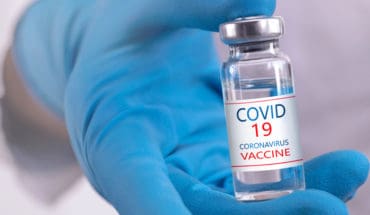As a medical oncologist treating pancreatic, liver, gall bladder and colon cancer with chemotherapy, I try to extend patients’ lives and maintain a decent quality of life. Patients understandably ask me, ‘with all the talk of advances of cancer treatments in the media why can’t chemotherapy cure cancer?’
Can chemotherapy cure cancer then?
Yes it can, but only in a handful of tumour types. Those are testicular cancer, gestational choriocarcinoma (a rare cancer of the placenta), Hodgkins disease and high-grade lymphomas. These are a rare group of cancers. What do they have in common? There are fundamental differences in responsiveness to chemotherapy of these rare malignancies compared to that of common solid tumours, so the key question is how do the qualities of the chemotherapy drugs and the properties of the cell type contribute to cure? Evidence indicates that intrinsic properties of the malignant cell type are the key determinants of curability. Can increased scientific understanding of the processes within these different cell types occurring during malignant transformation and during growth suggest explanations for these very different patterns of response to chemotherapy? Most chemotherapy drugs are intracellular poisons; they disrupt important cellular processes by inducing various damaging lesions in DNA. These processes are followed by the induction of ‘suicidal’ cell death or ‘apoptosis’. The key difference between these two groups of malignancies probably lies in the link between the first and second steps—damage to the cell, and induction and execution of cell death, respectively. The importance of apoptosis to the activity of anticancer agents is well documented and supported by lots of studies. Is there poof to show that the chemotherapy-curable cancers retain their sensitivity to chemo-induced cell death under conditions that lead incurable cancers to acquire drug resistance?
Clues as to possible mechanisms that might underlie the intrinsic and enduring sensitivity of specific cancer types to chemotherapy can be seen from the example of that, during foetal development, large changes occur in the sensitivity of the developing embryonic cells to chemotherapy agents. At the commencement of embryogenesis, foetal cells have extreme sensitivity to chemotherapy agents, as demonstrated by the ability of very small doses of methotrexate to produce rapid cell death in ectopic pregnancies.
Chemotherapy treatment given to the mother in the first trimester of pregnancy, whilst organ formation is taking place, also shows a clear association with foetal loss and increased risk of foetal malformations. By contrast, during the second and third trimester, when organ formation is complete, the foetus exhibits a similar degree of resistance to chemotherapy to that of normal adult tissues; chemotherapy can then be given in relative safety with minimal toxicity or long-term risks to the foetus. These observations suggest that more primitive tissues have an intrinsic sensitivity to chemotherapy that is lost during maturity. So why is this? Do chemotherapy-sensitive cells share any common characteristics, what mechanisms are involved in the retention of sensitivity to chemotherapy, and how could these features be exploited?
A number of studies have demonstrated that chemotherapy-curable malignancies have an increased intrinsic sensitivity to cell death by chemotherapy compared with the common malignancies. These three groups of malignancies have a common property that distinguishes them from other cells in the body, and which is linked to these malignancies’ intrinsic sensitivity to chemotherapy; each cell type undergoes complex genetic events as part of its normal physiology at the point of malignant transformation. Interestingly, each cell type undergoes a distinct genetic process: germ cells prepare for production of sperm; lymphocytes undergo recombination followed by somatic hyper mutation, and gestational choriocarcinoma arises from either highly abnormal pregnancy cells or trophoblast cells that are closely related to embryonic stem cells. Despite the differences between these three genetic pathways, each leads to the common theme of retention of extreme sensitivity to DNA-damage-induced apoptosis, and hence sensitivity to chemotherapy.
So how can this help us to improve the curability of solid tumours whose survival hasn’t improved too much over the last 40 years of chemotherapy drug development? It seems that if we can prime tumour cells to suicidal cell death and future technological developments could facilitate the delivery of additional important genes, and the use of other drugs that alter the activity of key cell death pathways could lead to improved therapeutic success.
We have a long way to go to curing common solid tumours with chemotherapy. This is will only come from understanding where chemotherapy does work and using this information to exploit weaknesses in solid tumours.
- Why does chemotherapy not cure my cancer? - 13th March 2016






